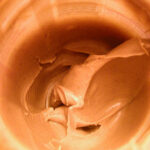Recently, on the social network MyLot, I started a discussion about how to cook with cabbage, a member of the Cruciferous family of vegetables. Up till that point all I had ever done with this leafy green wonder was boil it, and then add a little bit of butter and pepper for a tasty side dish. So I was pleasantly surprised to see the abundant assortment of recipes people came up with. Inspired by their responses, I decided to do a little research to see if there were any medicinal advantages to this verdant edible plant.
First of all, according to the nonprofit site “The World’s Healthiest Foods,” cabbage is an excellent source of vitamin C. Put that in your soup and eat it. As a matter of fact, here’s a wonderful recipe to get you going.
Chicken Cabbage Soup: Boil chicken in spiced up water for about 1/2 hour. A slow rolling boil works best. Take a strainer and scoop the chicken and any undesirable “floaties” out of the water. There should be some of the clear fat floating in the water. Leave that there.
Chop a small cabbage and add to the chicken broth you have just made. Strip the chicken carcass of any meat and place back into the cabbage and broth. If you like, you might want to add carrots, peas, green beans and corn for a little bit of color. Use garlic and onion to flavor the soup and salt and pepper for a dash of more taste.
At any rate, other benefits of cabbage include maintaining strong bones in the elderly (as it’s an outstanding source of Vitamin K), it’s a very good source of fiber, vitamin B1, B2 and Omega 3 fatty acids which according to the American Heart Association is very good for the heart. I hear it will also do wonders for those of us entering the menopausal stage of our lives. There are more nutrients in cabbage, too many to mention here but hopefully you are beginning to get the picture.
In any case, going back to the conversation I started over at MyLot, “How to Cook With Cabbage,” here’s a quick and easy recipe from the gourmet blogger, Charlene, that you might enjoy.
Cut up the cabbage and sauté (use virgin olive oil in skillet) with chopped onions. You can serve it over cooked buckwheat (better than white rice) or add some red bell peppers.
Of course, one precaution to mention here: Individuals with existing and untreated thyroid problems might want to avoid cabbage as it does contain goitrogens which interferes with the thyroid gland or the function thereof.
Nonetheless, cabbage can play a huge role in women’s health. For instance, it can dismantle and even eliminate breast cancer-producing substances. And though raw cabbage juice might not sound too appetizing, it is used to treat peptic ulcers. Apparently, it also has anti-aging and rejuvenating properties.
Red cabbage actually may protect against Alzheimer disease. According to a study published in Food Science and Technology, antioxidants polyphenols can protect brain cells from damage.
There are also cardiovascular benefits from cabbage consumption as well as promoting gastrointestinal health and it can optimize your cells detoxification or cleansing ability.
Needless to say, though I did not want to bore you with too much medical “mambo jumbo,” the nutrients in cabbage are amazingly beneficial to our well being. I dare say, one might want to begin including a healthy amount of this vegetable in one’s diet.
There’s sure to be quite a few creative ways to cook with cabbage-try this cabbage roll-ups recipe from Greg.
Use raw cabbage leaves instead of corn or flour tortillas. Fill with cold cuts or tuna/chicken/egg salad. Grilled chicken can be used as well.
There you have it. The health benefits of the simple cabbage are quite amazing. It’s easy to cook, not bad to eat raw (try it on a sandwich instead of lettuce), it’s cheap and should probably be a part of our daily diet.





